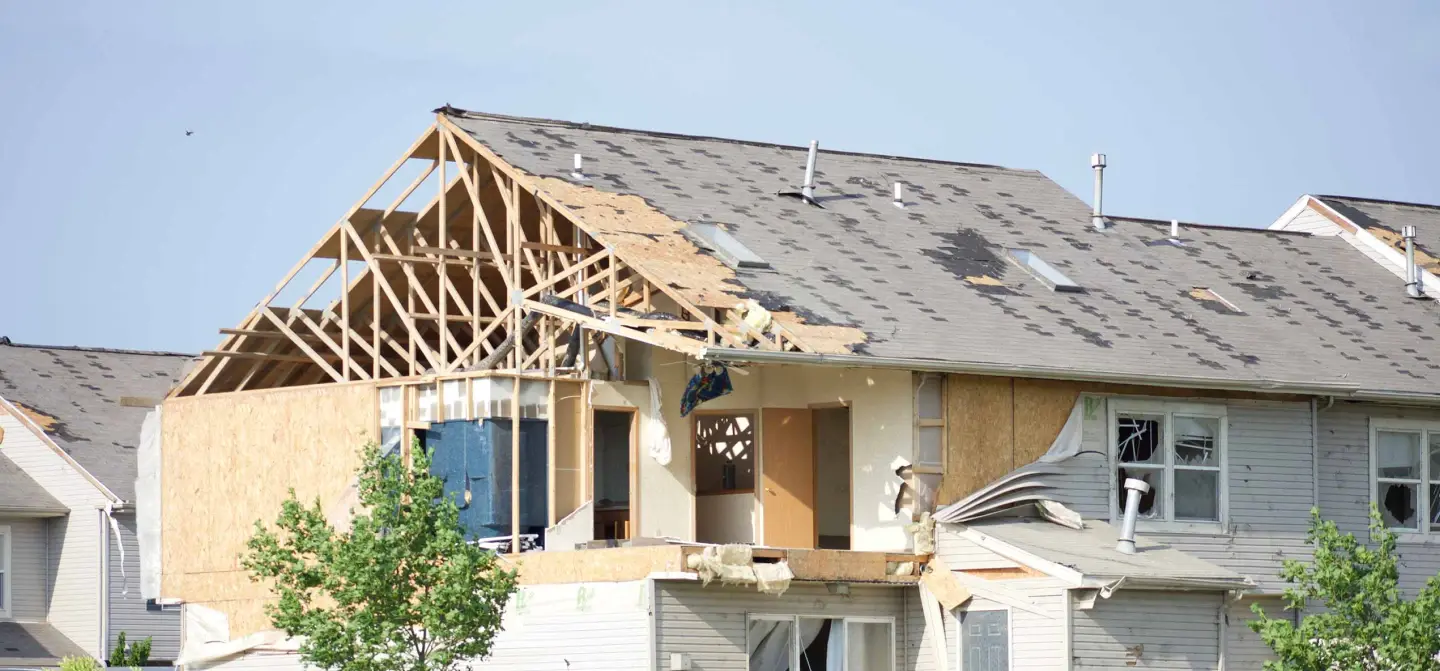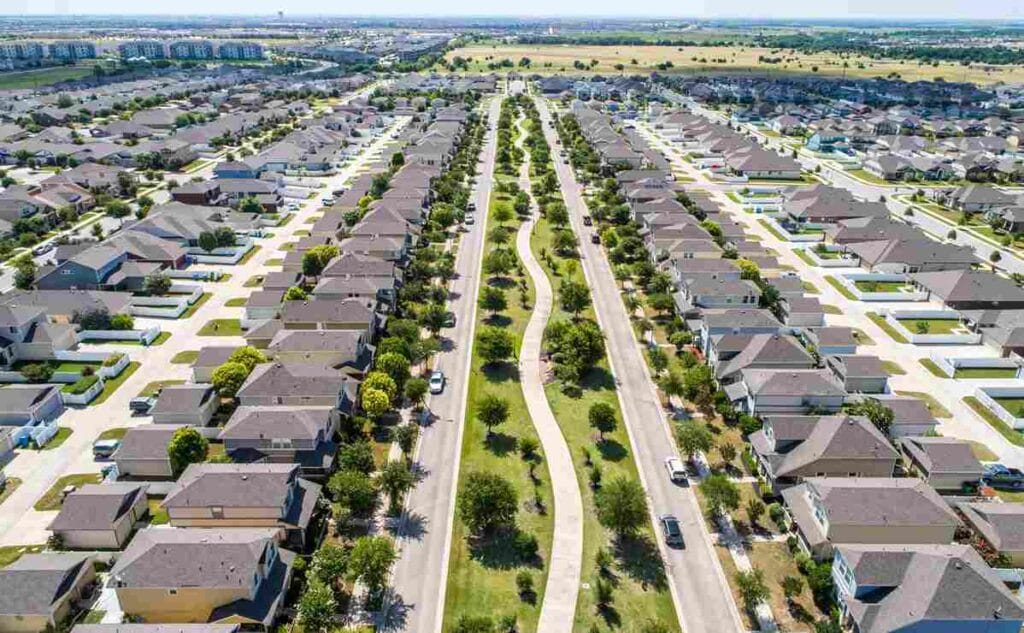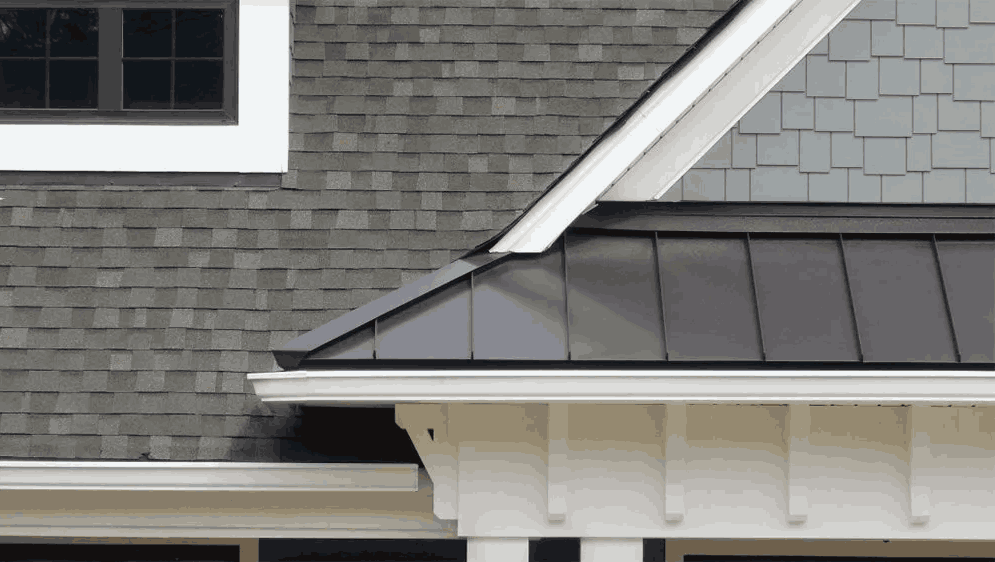
A lot of major roof issues can often be prevented. Sometimes they happen due to deterioration and neglect, and sometimes they have other causes, like wild weather and storms. Your roof and the impact of wild storms are what we’re going to focus on today.
After experiencing wild weather, such as heavy storms or severe winds, it’s crucial for homeowners to prioritize the assessment of their roofs.
Even seemingly minor weather events can cause significant damage to roofs, leading to leaks, structural issues, and costly repairs. Not to mention a lot of the time, major roof issues can be avoided, even when there has been storm damage.
In this article, we’ll explore the benefits of getting a severe weather roof inspection and highlight key signs to look out for in terms of roof storm damage.
Why Severe Weather Roof Inspections Are Essential
Regular maintenance and staying on top of your roof’s condition is what can help to expand its lifespan significantly. Texas weather can be unpredictable and its impact on roofs severe.
By getting a professional severe weather roof inspection following wild climate events, you can detect hidden damage that might not be visible to an untrained eye.
Key Benefits of a Roof Inspection
- Identify hidden damage before it worsens.
- Strengthen your roof insurance claim with documented proof.
- Avoid costly repairs by addressing issues early.
- Ensure your roof is structurally sound after storms.
Early Detection and Damage Prevention
Early detection allows for timely repairs, preventing further issues and potentially saving you from costly repairs down the line. Moreover, addressing issues early on can help preserve the structural integrity of your roof, protecting the overall value of your property.
A professional roofing company can help you identify weakened areas, loose or missing shingles, damaged flashing, or compromised gutters. You can even take some time out to inspect the roof yourself. Just take a walk around your home and see if you can spot any signs of damage, such as broken parts of the roof and guttering system, or excessive water in any areas.
How Severe Weather Impacts Your Roof
Understanding how different types of severe weather affect your roof can help you act promptly and prevent long-term issues.
Hail Damage: More Than Just Dents
Hail can range from pea-sized pellets to golf-ball-sized chunks. The larger the hail, the more severe the damage. Hail damage isn’t just cosmetic; it can lead to significant structural issues.
Common signs of hail damage:
- Dented metal components like vents and gutters.
- Cracked shingles or roofing tiles.
- Bald spots where granules are stripped away.
Wind Damage: The Invisible Threat
Strong winds often go unnoticed but can be as damaging as hail. High winds can lift shingles, bend flashing, and create vulnerable areas for water penetration.
💡What to look for:
- Lifted or bent shingles.
- Missing pieces of the roof’s edge or flashing.
- Gaps around roof vents or chimneys.
Storm Damage: The Cumulative Effect
Texas weather often features a mix of heavy rain, strong winds, and hail. Prolonged exposure to multiple storm events can create a cumulative effect on your roof’s integrity.
🎯Impact on your roof:
- Weakened roofing materials due to repeated exposure.
- Moisture infiltration that leads to mold and wood rot.
- Structural concerns from prolonged wear.
Signs of Roofing Damage to Keep an Eye Out For
Damage can occur in many different ways. However, there are some key signs that point to issues that should be addressed:
- Missing or damaged shingles: Strong winds and hail can dislodge or break shingles. Inspect your roof for missing or damaged shingles, as they can leave vulnerable spots for water penetration and lead to leaks. Promptly replacing or repairing these shingles can prevent further damage. If you notice granules from shingles accumulating in gutters or around the house, it may also indicate shingle damage.
- Leaks or water stains: If you notice water stains on your ceilings or walls, it could indicate a roof leak. Check your roof cavity or crawl spaces for signs of moisture, as they can be early indicators of roofing issues. Addressing leaks promptly is crucial to prevent structural damage, mold growth, and potential health hazards. During an inspection, professionals can identify the source of the leak and recommend appropriate repairs or preventive measures.
- Granule loss: Many roofs have shingles with granules that protect against UV rays and enhance durability. Hail or heavy rainfall can cause granule loss. Inspect your gutters and downspouts for excessive granules. Significant granule loss can compromise the effectiveness of your roof and reduce its lifespan. If you notice bald patches on your shingles, it’s a clear sign of granule loss and potential damage.
- Dented or bent flashing: Flashing around chimneys, vents, and skylights is essential for preventing water penetration. Strong winds or hail can dent or bend flashing, compromising its effectiveness. Inspect your flashing after wild weather for any signs of damage and ensure it is intact to maintain a watertight seal.
When Should You Schedule a Severe Weather Roof Inspection?
To protect your home and prevent further damage, it’s crucial to schedule a professional roofing inspection promptly after experiencing wild weather that is significant. Early action can save you from costly repairs and potential safety hazards in the future.
Regular Inspections Are Key
Don’t wait for damage to occur or for stormy weather. To elongate the lifespan of your home’s roof, schedule regular roof inspections, even if there hasn’t been recent severe weather. Aim for annual inspections as a minimum, or if your roofing specialist recommends a different time frame—perhaps due to the age of your home—follow their guidelines.
Tips for Filing a Roof Insurance Claim After Severe Weather
Securing your roof insurance claim can be overwhelming, but having documentation from a professional roof insurance inspection makes the process smoother.
Key Steps for a Successful Insurance Claim
- Document all damage with detailed photos.
- Contact your insurance company as soon as possible.
- Submit the inspection report from a certified roofing expert.
- Communicate clearly about the type of weather event and damage involved.
Key documents to include:
- Professional inspection estimate or report.
- Photographic evidence highlighting damage.
- Receipts for any recent repairs or maintenance made.
Peace of Mind for Homeowners
A sturdy and well-maintained roof is essential for the safety and comfort of your home—it does a lot of heavy lifting when it comes to taking care of your home and belongings. Following wild weather, getting a thorough roofing inspection provides peace of mind. Knowing the condition of your roof, whether it has weathered the storm well or requires immediate attention, can alleviate worries about leaks, structural integrity, and potential hazards.
Why Choose Roofer.com for Hail Damage Roof Repair
At Roofer.com, we pride ourselves on combining cutting-edge technology with expert craftsmanship. We provide:
- The most accurate inspection reports tailored for insurance purposes.
- A team of seasoned professionals skilled in storm damage repairs.
- Assurance that your home’s roof is in the best hands.
Key Takeaways
- A severe weather roof inspection is essential for spotting hidden damage.
- Hail, wind, and storm damage can compromise your roof’s integrity.
- Choose a professional roofing company experienced in severe weather repairs.
- Roofer.com offers expert inspections with advanced drone technology.
Conclusion
Weather in Texas can be fierce, but being proactive with severe weather roof inspections can save you time, money, and stress. Regular inspections after storms and a solid relationship with a reliable roofing company will help keep your home protected.
Choose Roofer.com for trusted, efficient, and high-quality storm damage repair solutions. Protect your investment and ensure your peace of mind today.




